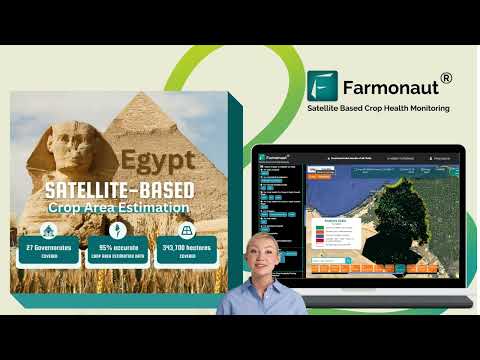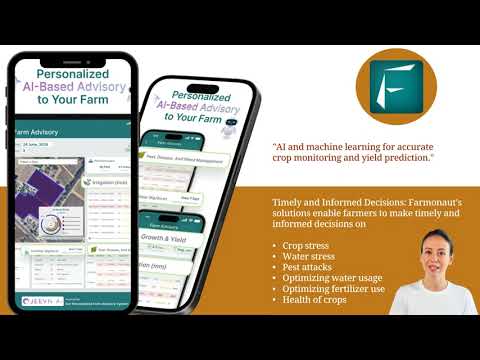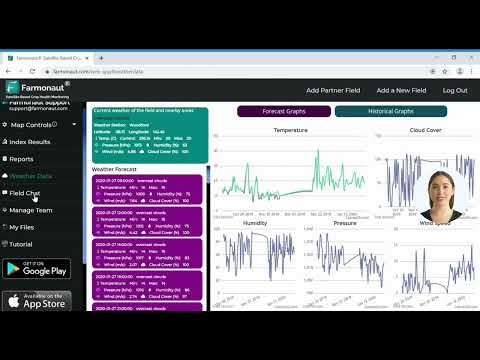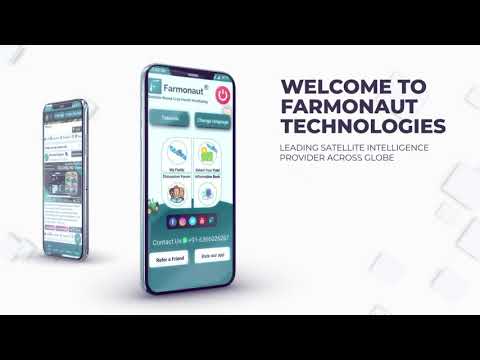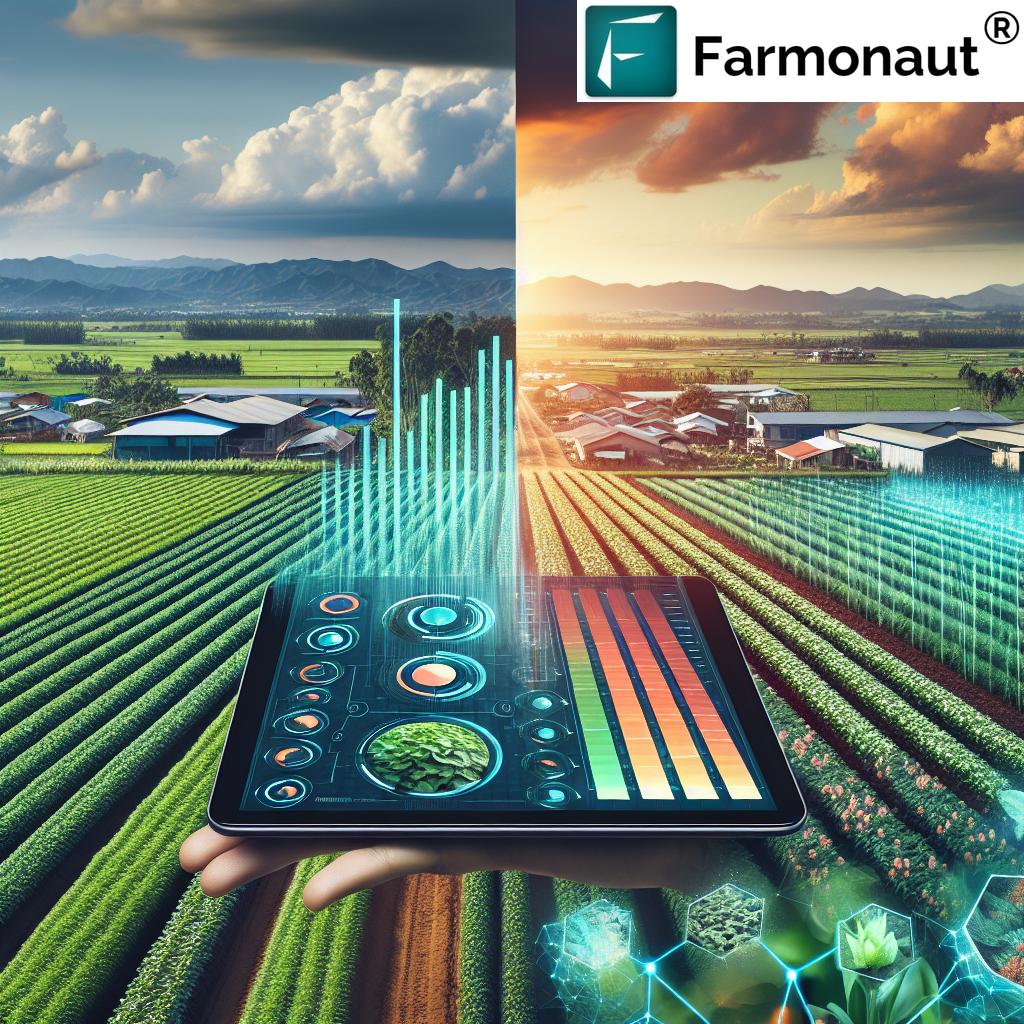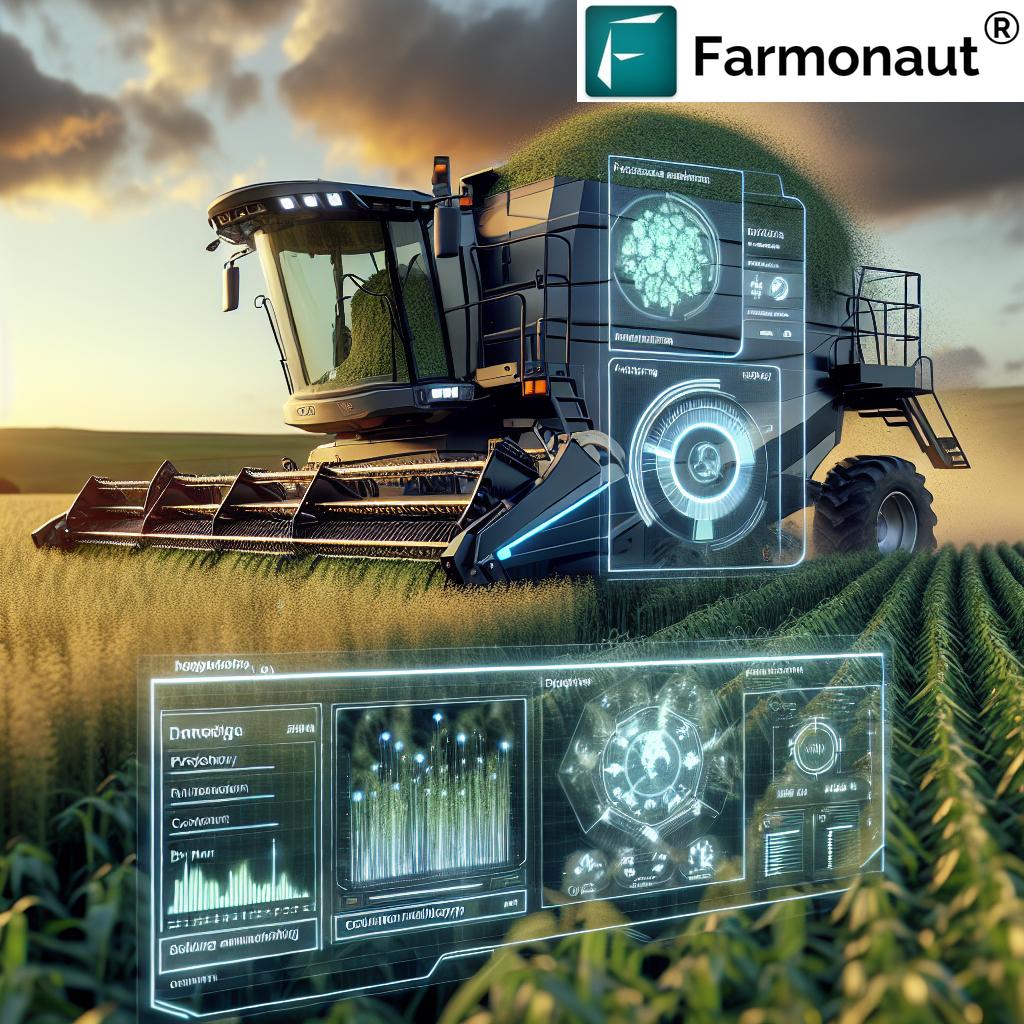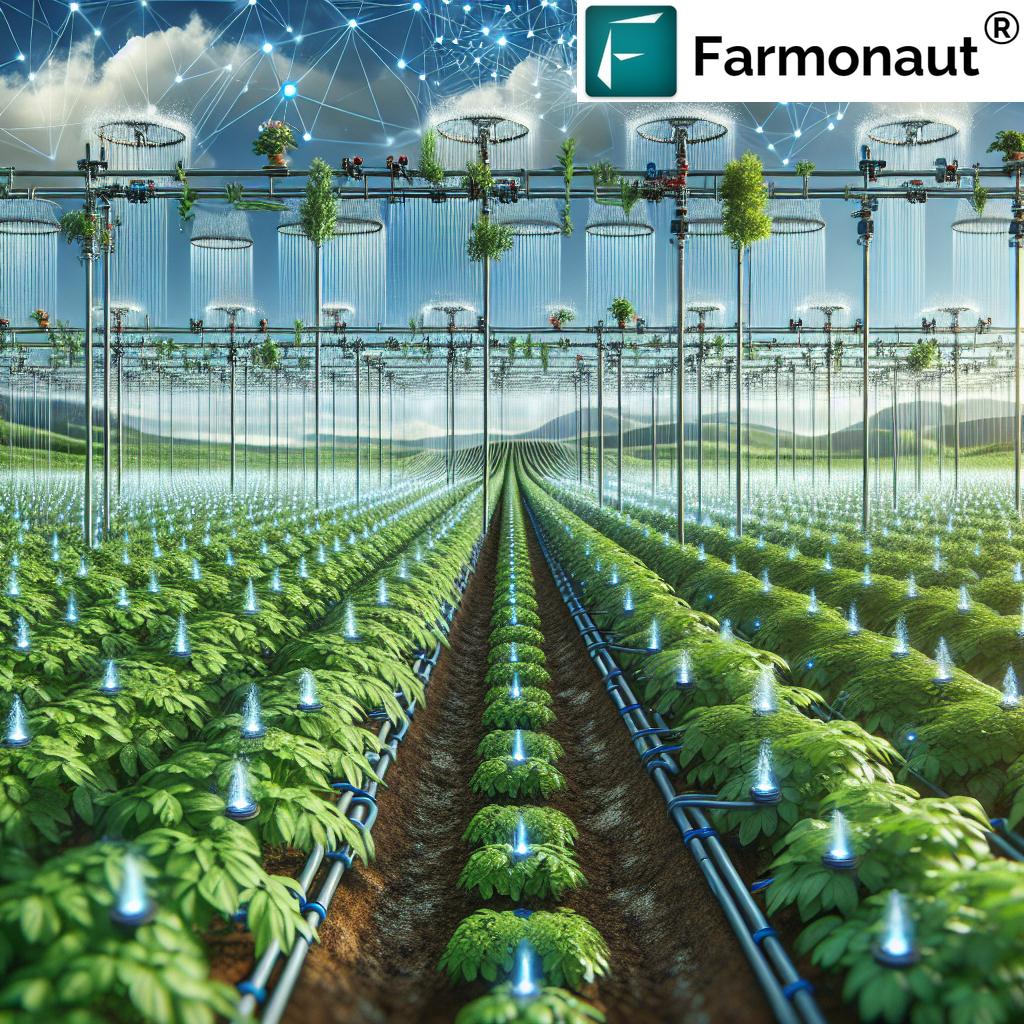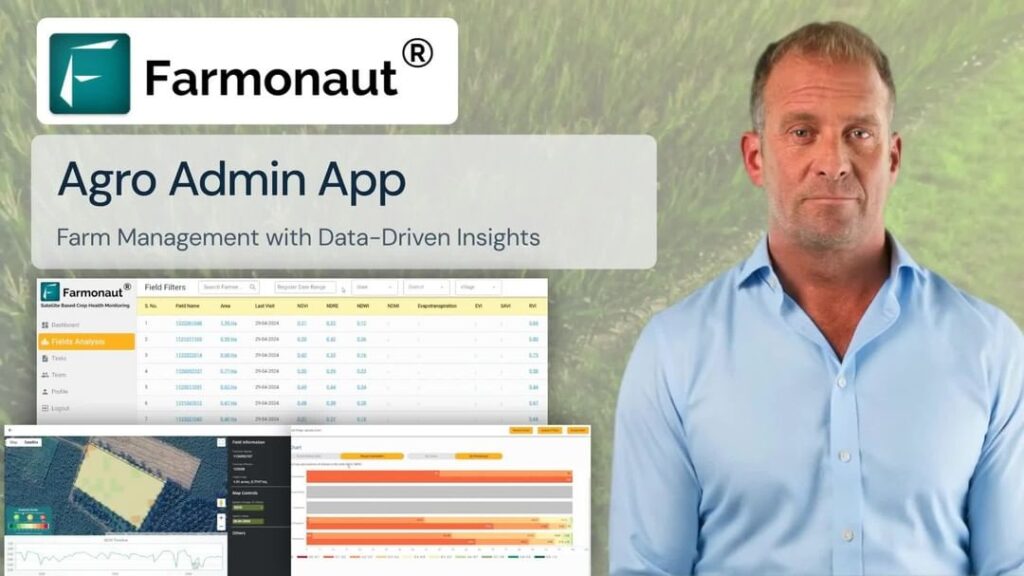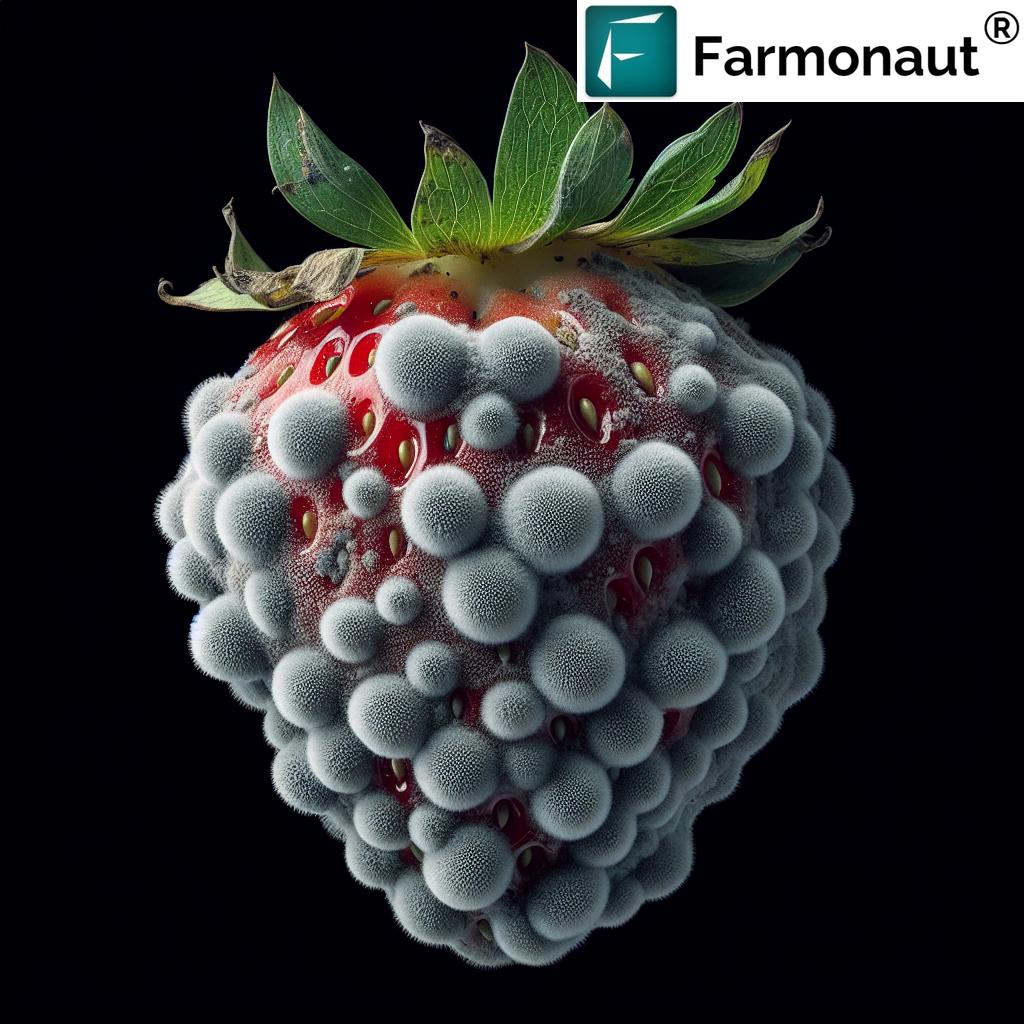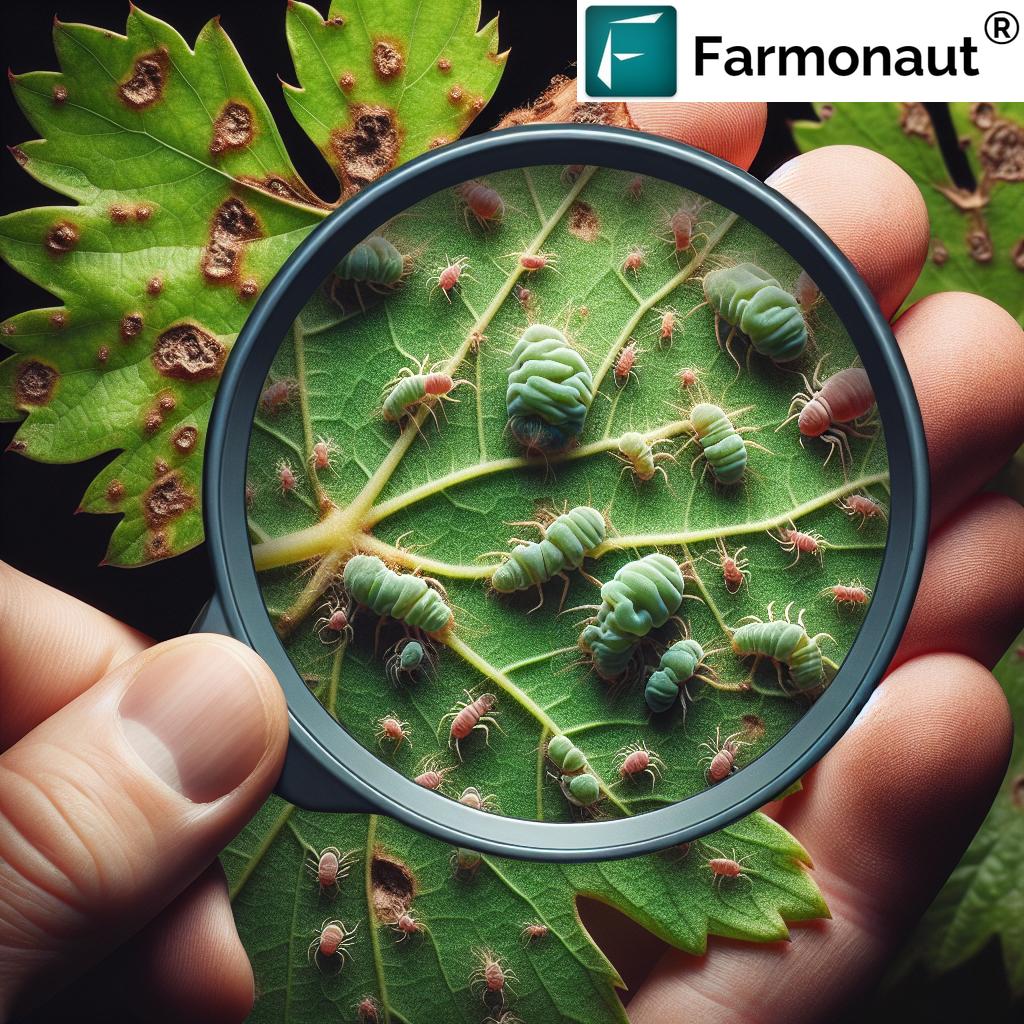7 Crop and Field Scouting Hacks to Skyrocket Yields!
“Effective crop scouting can increase yields by up to 20% through early pest detection and targeted interventions.”
Contents
- Introduction: Crop & Field Scouting in Agriculture
- The Importance of Crop Scouting
- 7 Crop & Field Scouting Hacks for Yield Optimization
- Comparison Table: 7 Scouting Hacks
- Top Field Scouting Techniques & Tools
- Implementing an Effective Crop Scouting Program
- Scouting Challenges & Considerations
- Advancements in Field Scouting Technologies
- How Farmonaut Empowers Crop Scouting & Sustainable Yield Optimization
- Farmonaut Subscription Plans
- Frequently Asked Questions
- Conclusion: The Future of Crop & Field Scouting
Introduction: Crop & Field Scouting in Agriculture
In modern agriculture, maximizing crop yields sustainably is no longer just a goal—it’s a necessity. Crop and field scouting stands as a fundamental practice that enables us, as farmers and agronomists, to monitor crop health, detect pests and diseases, and assess the overall field conditions. Through the use of scouting techniques for farmers and technological innovations, we are now empowered to take proactive action for yield optimization in farming.
Field scouting in agriculture effectively combines traditional observation with advanced tools like digital apps and satellite data, enabling us to make informed decisions that transform farming into a more sustainable, efficient process. Let’s explore the key concepts, benefits, and actionable hacks you can implement today to skyrocket your yields!
The Importance of Crop Scouting
Crop scouting is not just a routine—it’s the backbone of proactive farm management. By systematically assessing fields for threats, growth stages, and resource needs, we build a robust foundation for yield optimization in farming and sustainable practices. Here’s why regular crop and field scouting is indispensable:
- Early Detection of Issues: Consistent scouting allows us to detect pest infestations, diseases, and nutrient deficiencies at their onset. This enables timely interventions, minimizing potential damage and loss.
- Informed Decision-Making: By gathering accurate field data, we inform our decisions on pesticide applications, irrigation scheduling, and fertilization. This leads to more efficient use of resources.
- Yield Optimization: Timely recognition and resolution of issues directly contribute to enhanced crop health and higher yields.
- Sustainable Practices & Environmental Stewardship: Scouting aligns with integrated pest management (IPM) strategies, reducing over-reliance on chemical treatments and safeguarding the environment.
By integrating both traditional methods and cutting-edge technologies, we are not just reacting to problems—we’re preventing them, which is the true essence of sustainability in modern agriculture.
“Sustainable field scouting reduces unnecessary pesticide use by 30%, promoting healthier soil and environmental conservation.”
7 Crop and Field Scouting Hacks to Skyrocket Yields!
With years of hands-on experience and data-driven evidence, we’ve distilled the seven most effective crop scouting hacks for yield optimization, early disease detection, and sustainable field management. Each hack targets a different aspect of scouting and field monitoring, leverages modern technologies, and contributes directly to environmental sustainability.
1. Adopt a Proactive & Scheduled Scouting Program
Rather than waiting for visible signs of trouble, a planned and regular scouting schedule ensures early detection of latent issues. Using calendars based on local crop cycles, pest life stages, and previous seasons’ data transforms your field monitoring into a predictive, not just reactive, practice. Set up reminders and document every session for comparative analysis.
- Use digital scouting apps to schedule, log, and track all scouting missions. These apps enable consistent recording, mapping, and team coordination, reducing the risk of missing key stages in crop development.
- Integrate climatic data and growth stage models to optimize timing for pest and disease scouting.
- Result: Ensures early pest detection in crops, faster interventions, and improved yield optimization with minimal resource wastage.
2. Combine Visual Inspection with Advanced Imaging
Walking through your fields remains essential, but we recommend combining human observation with remote sensing technologies for comprehensive insights. Utilize drones equipped with multispectral cameras and satellite-based imaging platforms for wide-area crop health monitoring and precise pest and disease detection.
- Walk fields regularly to observe plant color, leaf texture, canopy uniformity, signs of insects or fungi, and other abnormalities.
- Augment field walks with satellite imagery platforms like Farmonaut. These offer NDVI (Normalized Difference Vegetation Index) and moisture maps to pinpoint stressed areas—impossible to detect at ground level alone.
- Drones can capture detailed video/images, supporting early identification even before symptoms are obvious to human eyes.
- Review areas flagged by imaging for follow-up ground sampling, ensuring resources are directed where they’re most needed.
- Outcome: Enables early disease detection in crops, reduces scouting time for large fields, and enhances decision accuracy.
3. Invest in Digital Scouting Apps & GIS Mapping
Manual record-keeping is prone to errors. Migrating to digital scouting apps ensures data consistency, traceability, and geographic context for every observation. Apps like Farmonaut, FarmQA, and similar platforms provide customizable forms, GPS-based mapping, and real-time analysis.
- Each observation gets a GPS-tagged record—critical for tracking pests, disease hotspots, and field variability year-over-year.
- Digital tools improve team collaboration and data transparency; managers can assign scouts, review progress, and assess intervention impacts.
- Results include improved application precision for pesticides and fertilizers—leading to reduced costs and minimized chemical overuse.
Pro tip: Use API access (see Farmonaut API and developer docs) to integrate satellite and field data into your existing farm software or decision support systems.
4. Integrate Insect Sampling Techniques – Sweep Netting & Drop Cloth
Directly quantifying pest and beneficial insect populations is vital. Two proven scouting techniques for farmers are sweep netting and drop cloth sampling:
- Sweep Netting: Pass a sturdy net through crop rows to capture insects. After a set number of sweeps, count the types and numbers of insects caught. This reveals pest prevalence and presence of natural enemies.
- Drop Cloth Sampling: Place a white cloth beneath the foliage, shake the plants, and count the fallen insects. This technique is especially effective for small, hard-to-see pests.
- Both methods allow targeted pest management decisions—applying controls only where necessary (IPM), supporting sustainable farm management.
5. Perform Systematic Soil and Tissue Sampling
Scouting goes beyond what’s visible on plants. Regular soil sampling (for nutrients, pH, moisture) and plant tissue sampling (for nutrient deficiencies) are essential. These techniques allow us to identify hidden deficiencies impacting yield potential.
- Collect samples from various field zones; analyze for macro and micronutrient levels, salinity, and disease pathogens.
- Combine results with GPS maps for precision variable rate fertilizer applications—boosting yield and reducing excess input use.
- Sample at least annually or whenever poor growth is noticed.
Try: Farmonaut’s remote sensing can also support soil moisture estimation and stress detection at a larger scale.
6. Leverage AI, Advisory Systems, and Real-Time Weather Data
Technology lets us go from data collection to real-time decision support. AI-powered advisory platforms (like Farmonaut’s Jeevn AI) analyze your agro-climatic data, satellite health maps, and historical patterns to recommend timely, field-specific actions.
- Receive customized warnings—for outbreaks, weather shifts, irrigation timing, and nutrient interventions, maximizing your opportunity for timely, effective action.
- Weather data overlays help refine pesticide application timing and reduce wastage or drift, improving efficiency.
- Use precision agriculture technologies for instant, actionable intelligence delivered to your phone or desktop.
7. Implement Integrated Traceability & Resource Management
For holistic yield and sustainability improvements, track every crop operation, field intervention, and product movement. Blockchain-based traceability systems (like Farmonaut’s Traceability Solution) guarantee transparency “from seed to sale.” The same philosophy extends to machinery and input usage:
- Monitor fleet management and input application logs using digital solutions; cross-reference work done with yield maps for ROI analysis.
- Implement carbon footprint tracking for environmental compliance and marketability.
- Automate traceability of interventions using connected apps and APIs, ensuring compliance for export markets and premium buyers.
Comparison Table: 7 Essential Scouting Hacks
Below, review the essential differences, benefits, and sustainability impact of each field scouting technique:
| Hack/Technique Name | Purpose | Estimated Yield Increase (%) | Sustainability Impact | Key Tools/Technologies Used | Implementation Complexity |
|---|---|---|---|---|---|
| Scheduled Program | Early identification of issues | Up to 10% | High | Scouting apps, Calendar, Records | Easy |
| Visual+Advanced Imaging | Comprehensive crop health monitoring | Up to 15% | Medium | Drones, Satellite, NDVI | Advanced |
| Digital Apps & GIS Mapping | Accurate record-keeping & spatial analysis | Up to 7% | High | GPS, Cloud apps, API | Moderate |
| Sweep Net & Drop Cloth | Precise pest & insect identification | Up to 6% | High | Nets, Cloth, Field tools | Easy |
| Soil & Tissue Sampling | Detect hidden nutrient deficiencies | Up to 8% | Medium | Sampling kits, Lab testing | Moderate |
| AI & Real-time Advisory | Instant, actionable interventions | Up to 12% | High | AI systems, Farmonaut Jeevn, Weather | Advanced |
| Traceability & Resource Mgmt | Full transparency, compliance, and analysis | Up to 5% | High | Blockchain, Fleet mgmt, Traceability apps | Advanced |
Top Field Scouting Techniques & Tools for Yield Optimization
Let’s dive deeper into the core techniques making crop scouting effective, practical, and scalable for both smallholder and large-scale operations.
Visual Inspection & Walking Fields
Regular, systematic walking through crop rows (ideally in a zigzag or ‘W’ pattern) remains irreplaceable. Here’s what to observe:
- Discoloration or spots on leaves—may indicate nutrient deficiencies or disease problems.
- Holes, chewed leaf edges—symptoms of insect infestations.
- Stunted growth patches—potential soil problems or waterlogging.
- Signs of weed competition or damage from machinery or animals.
Sweep Netting
- Use a strong net for a fixed number of sweeps.
- Count and identify insects after each sample; keep consistent timing and methodology for reliable trends.
- Track shifts in populations for threshold-based pesticide decisions.
Drop Cloth Sampling
- Place a cloth beneath foliage and shake plants gently.
- Count all pests and beneficials dropped to the cloth for accurate density estimates.
Soil & Plant Tissue Sampling
- Collect soil at 15–20 cm depth; sample from multiple field regions and composite for analysis.
- During vegetative growth, take plant samples from representative areas to identify nutrient or disease issues.
- Review laboratory results and update fertilization plans accordingly.
Digital Scouting Apps & Mobile Tools
- Customizable observation sheets, offline data entry, photo storage, and instant cross-field analysis.
- GPS mapping overlays help us pinpoint problem areas, plan interventions, and measure the impact of every action.
- For a robust and scalable digital solution, Farmonaut offers one of the most accessible and feature-rich web and mobile platforms for crop monitoring and management.
Remote Sensing, Satellites, and Drones
- Multispectral satellites and drones see stress, waterlogging, and infestation vulnerabilities weeks before visible symptoms develop.
- Use NDVI, EVI, and thermal indexes for highly sensitive detection in large fields.
- Map pest “hotspots” to plan scouting walks and targeted pesticide applications.
Implementing an Effective Crop Scouting Program
An efficient scouting program is structured, data-driven, and team-oriented. Here’s how to build and sustain one on your farm:
- Develop a Scouting Schedule: Base it on crop type, growth stages, previous seasons, and local pest calendars. Digital reminders help.
- Train Your Personnel: Everyone involved should be expert in pest, disease, and nutrient deficiency identification, proper sampling, and digital reporting.
- Record Observations Consistently: Use field notebooks or, preferably, a digital scouting app. Attach images, GPS data, and weather notes.
- Analyze and Act: Evaluate trends and patterns; when thresholds are exceeded, plan targeted interventions—for chemicals, irrigation, or cultural corrections.
- Review & Optimize: After each season, analyze yield maps (see yield mapping) against interventions logged for continuous improvement. Share lessons learned within your scout team.
Scouting Challenges & Considerations
No field practice is without hurdles. When designing or upgrading your crop and field scouting approach, consider common challenges:
- Time Constraints: Large fields and peak growing seasons can make manual scouting overwhelming. Augment labor with remote sensing tools and focus on problem areas.
- Need for Trained Personnel: Accurate identification is vital. Invest in regular training and leverage digital identification guides and image libraries in apps for at-field reference.
- Data Management: With large volumes of observations, logs, and images, adopt cloud-based platforms for easier analysis and reporting.
- Weather Barriers: Wet or stormy weather restricts field access and may suppress pest emergence. Schedule scouting to avoid downtimes and rely on remote sensing to maintain oversight.
Advancements in Field Scouting Technologies
The last decade has accelerated the accessibility of precision agriculture technologies and digital transformation for all scales of farming. Some key breakthroughs enabling sustainable yield optimization are:
- Precision Agriculture Systems: Precision agriculture technologies integrate sensors, GPS, and analytics for field variability mapping. This allows highly targeted nutrient, water, and chemical interventions for both cost and environmental benefit.
- Yield Mapping & Geo-Analytics: GPS-based yield monitors on harvesters provide high-resolution maps, helping compare yields against historical scouting data and previous interventions, identifying what’s working (and what’s not).
- Farmer Field Schools: Group-based knowledge sharing programs foster hands-on training, scaling up integrated pest management and digital scouting best practices, especially in developing regions.
Digital transformation using Farmonaut and similar platforms makes the most advanced data-driven agriculture possible at an affordable, scalable rate for all.
How Farmonaut Empowers Crop Scouting & Sustainable Yield Optimization
Modern crop and field scouting is empowered by Farmonaut’s precision agriculture solutions—making data-driven farm management achievable for any size operation, worldwide.
- Satellite-Based Crop Health Monitoring: Farmers can monitor fields in real time, viewing NDVI and soil moisture maps, detecting early stress and pest issues well before yield is impacted.
- Jeevn AI Advisory: AI-based recommendations are delivered as actionable, field-specific insights—automatically analyzing your satellite crop health data and suggesting interventions for optimal yield and sustainability.
- Blockchain-Based Traceability: Use traceability solutions for full transparency around every stage of the harvest, supporting both compliance and brand reputation.
- Fleet and Resource Management: Monitor, optimize, and manage machinery operations and inputs with fleet management tools for greater operational efficiency.
- Carbon Footprinting: Track your carbon emissions and environmental impact in real-time, supporting global sustainability goals and climate-smart certifications.
To access these features, you can use the Android, iOS, and web app platforms—see download links above. For API integrations and developer access, visit Farmonaut API and the Developer Docs.
- For large-scale operators: Farmonaut’s Large-Scale Farm Management solution enables high-efficiency plantation monitoring, multi-user coordination, and improved ROI over vast areas.
- Crop plantation and forest advisory: Field-level satellite monitoring and AI advisory is available for forestry and crop plantation managers seeking predictive health insights at the touch of a button.
- For banks/insurers: Farmonaut assists with satellite-based verification of crop loans and insurance claims to reduce fraud and ensure quick turnaround.
With Farmonaut, affordable, scalable precision agritech is no longer a luxury—it’s available to all, supporting yield optimization, sustainability, and full transparency across the value chain.
Farmonaut Subscription Plans
Frequently Asked Questions – Field Scouting & Yield Optimization
What is crop scouting and why is it important?
Crop scouting involves systematic field observation to monitor crop health, detect pest infestations, identify diseases, and assess growing conditions. It’s important because it supports prompt decision-making and timely interventions, enabling early pest detection in crops and preventing major yield losses.
How can digital scouting apps improve field management?
Digital scouting apps replace paper records, enable geotagged observations, improve collaboration, and integrate with APIs and satellite data. This leads to greater data accuracy, easy access to historical trends, and supports precision applications of inputs for yield optimization in farming.
How does remote sensing aid in early disease detection?
Drones and satellites identify subtle stress factors, such as minor changes in vegetation indices (NDVI, EVI), that often precede visible disease symptoms. This allows for early interventions, reducing potential yield loss and minimizing chemical usage.
Why is integrated pest management (IPM) critical for sustainability?
IPM emphasizes using all available tools (biological, cultural, chemical, and mechanical) to control pests below economic thresholds, reducing pesticide reliance and protecting the environment—key for sustainable agriculture.
How do I get started with Farmonaut?
Download the Farmonaut app for your device (Android, iOS, or Web), subscribe to a plan, and register your fields. Set up your scouting schedule, enable satellite monitoring, and leverage AI-based insights for better field decisions.
Can smallholder farmers benefit from these technologies?
Absolutely. Farmonaut’s affordable plans and scalable solutions are specifically designed to make advanced crop monitoring and yield optimization accessible for small farms, not just large agribusinesses.
Where can I find documentation for Farmonaut’s APIs?
Explore technical details and usage guides for Farmonaut’s satellite and weather APIs here.
Are these scouting practices suitable for forest and plantation management?
Yes, with Farmonaut’s satellite-based monitoring and AI extension, managers can apply these best practices at scale across forests, plantations, and diversified agro-ecosystems.
Conclusion: The Future of Crop & Field Scouting Is Sustainable & Data-Driven
In the age of climate change and resource scarcity, crop and field scouting provides us with the edge required for profitable and sustainable yield optimization. By implementing these seven scouting hacks—which include everything from scheduled walks and high-tech imaging to digital record-keeping and traceability management—we can address pest, disease, and nutrient issues before they escalate, minimize chemical use, and contribute actively to environmental stewardship.
Platforms like Farmonaut bring cutting-edge AI, satellite monitoring, and blockchain traceability right into our hands, making scalable, effective field scouting in agriculture accessible for all. When we combine field-based wisdom with real-time technology, we not only skyrocket our yields but also promote practices that regenerate soils, protect ecosystems, and create a more sustainable future for generations of farmers.
Ready to empower your farm? Download the app or explore our web dashboard, and join the movement towards smarter, greener, and more productive agriculture.






